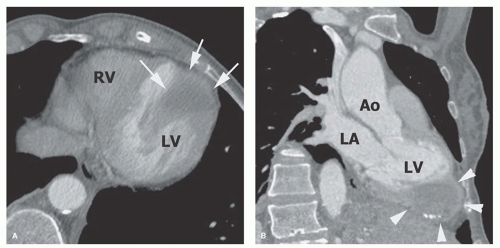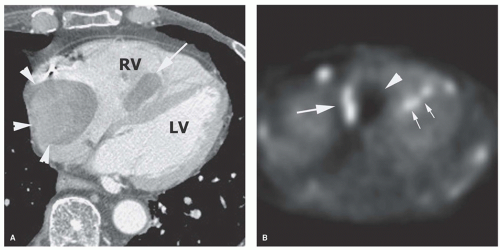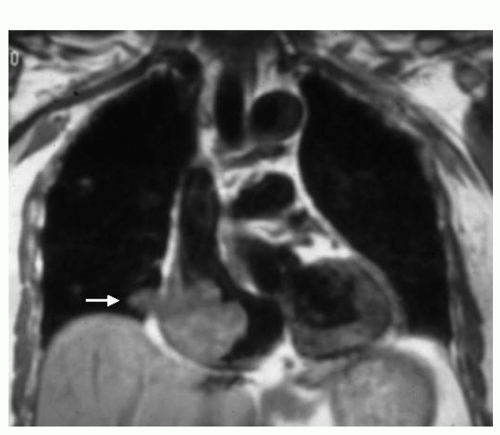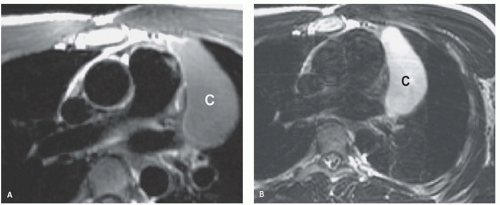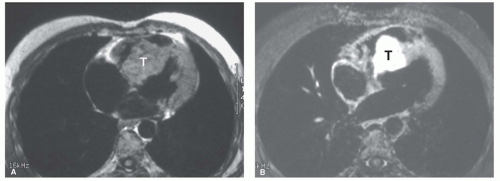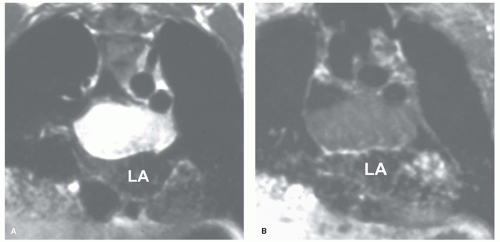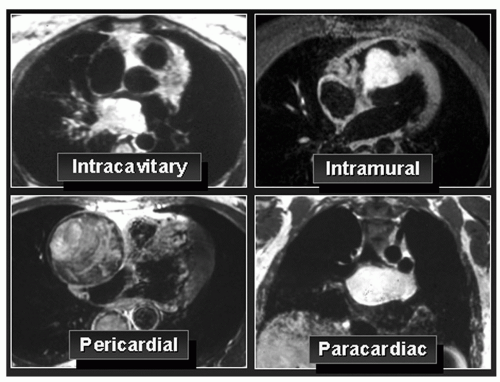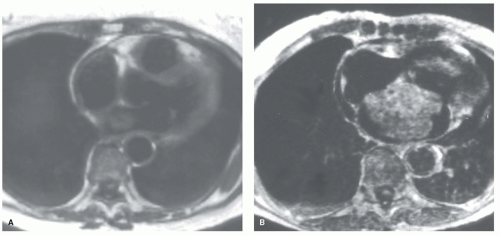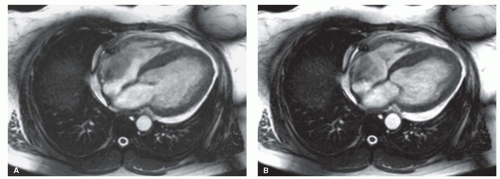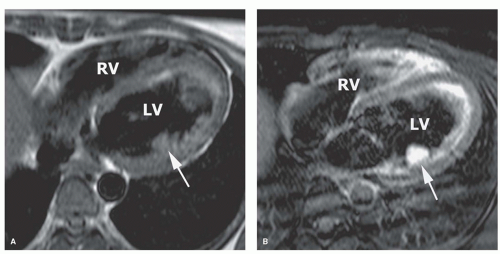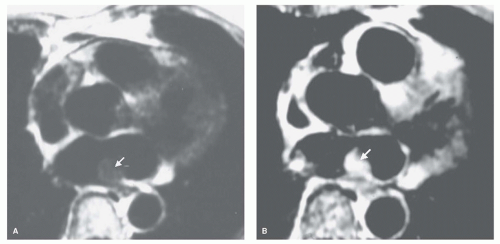Identify an intracardiac or extracardiac mass.
Demonstrate the extent and invasiveness of the mass (staging of tumor).
Distinguish between benign and malignant tumor, if possible.
Distinguish between primary and secondary tumor.
Distinguish between tumor and thrombus.
Differentiation of cardiac masses from normal anatomic variants
chronic obstructive pulmonary disease. Transesophageal echocardiography overcomes this problem but adds invasiveness. The soft tissue contrast achieved with echocardiography remains limited in comparison with that obtained with MRI and CT. Usually, pericardial involvement and infiltration of the myocardium can be better visualized with MRI and CT.
on T1-weighted images and moderate signal intensity on T2-weighted images. Cystic lesions (filled with simple fluid) have low signal intensity on T1-weighted images and high signal intensity on T2-weighted images (Fig. 13.5). The administration of Gd-DTPA (gadolinium diethylenetriamine pentaacetic acid) usually improves the contrast between tumor tissue and myocardium on T1-weighted images and may facilitate tissue characterization. Hyperenhancement of tumor tissue with MR contrast agents indicates either an enlarged extracellular space of tumor tissue in comparison
with normal myocardium (Fig. 13.6) or a high degree of vascularization of the mass. Application of a fat saturation sequence, which vitiates the bright signal of fat, is effective for the tissue characterization of lipomas (Fig. 13.7).
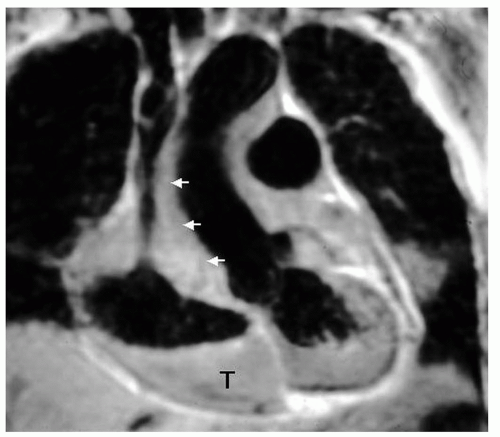 Figure 13.4. Angiosarcoma. ECG-gated spin-echo image in the coronal plane demonstrates a tumor (T) infiltrating through the right atrial cavity and extending around the superior vena cava (arrows). |
locally, they may lead to significant morbidity and mortality by causing arrhythmias, valvular obstruction, or embolism. An intramyocardial location can interfere with normal conduction pathways and produce arrhythmias, obstruct coronary blood flow, or diminish compliance or contractility through replacement of myocardium. Both benign and malignant tumors have characteristic sites of origin (Table 13.2).
TABLE 13.1 Primary Benign Cardiac Tumors | ||||||||||||||||||||||
|---|---|---|---|---|---|---|---|---|---|---|---|---|---|---|---|---|---|---|---|---|---|---|
|
TABLE 13.2 Typical Sites of Origin of Cardiac Tumors | ||||||||||||||||||||||
|---|---|---|---|---|---|---|---|---|---|---|---|---|---|---|---|---|---|---|---|---|---|---|
|
atrioventricular valve (Fig. 13.10) or into the corresponding ventricle during diastole. Rarely, myxoma can have a wide point of attachment to ventricular endocardium (Figs. 13.11 and 13.12).
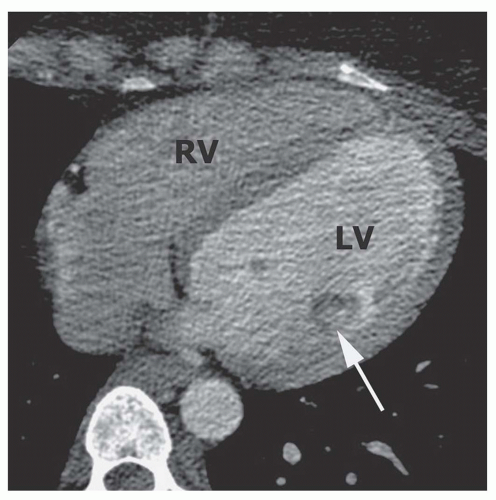 Figure 13.12. Contrast-enhanced CT in the axial plane shows the left ventricular myxoma (arrow) with some enhancement of the central part of the tumor. LV, left ventricle; RV, right ventricle. |
Stay updated, free articles. Join our Telegram channel

Full access? Get Clinical Tree



